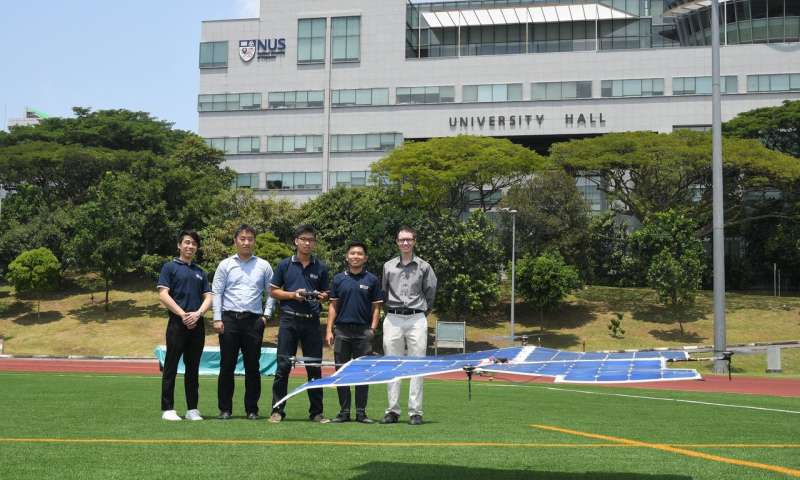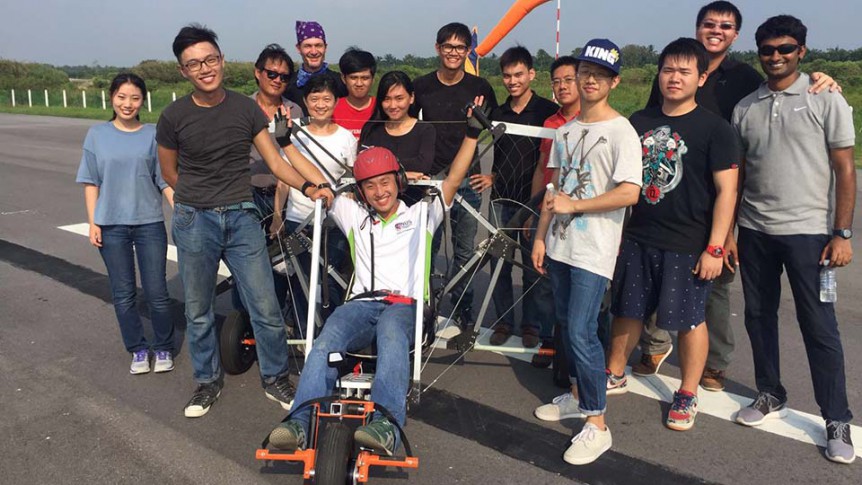In their latest adventure in derring-do, a team from the National University of Singapore (NUS) Faculty of Engineering has developed and flown Asia’s first fully solar-powered quadcopter drone. A large framework holds the solar cells, which are the sole means of powering the craft’s four motors. Developers have flown the big square above 10 meters in test flights and achieved controllable flight without the use of batteries. Frogworks Snowstorm This is just the latest in a series of aeronautical exploits by NUS students. In late 2015, they unveiled their Frogworks Snowstorm, a 24-rotor person carrier powered by 2.2 kilowatt (2.94 horsepower) motors driving 76-centimeter (30-inch) propellers. New Asia reported that, “At the London edition of technology event Founders Forum this month, [the Frogworks team] did not imagine that Prince William would end up showing interest in it.” His Royal Highness “spent half an hour sitting in the machine, trying out the controls and talking to the team, according to a …
Frogworks Unleashes Delta – the World’s Lightest Electric Paraglider Trike
Students at the National University of Singapore (NUS) have a history of creating ultra-lightweight flying machines that are also green – floating around on electric power. Their earlier effort, Snowstorm, a 24-rotor, single-person lifting device, so far has hovered only indoors. Eight engineering students, working within the school’s “Frogworks” program, have escaped into the great outdoors with their Delta, the world’s lightest electric paraglider – according to the school. With two eight-kilowatt electric motors, four 14S lithium polymer battery packs, and tricycle landing gear, the Delta weighs in at 49 kilograms (107.8 pounds) empty weight. Delta can carry a 75-kilogram (165 pound) pilot. Cleverly constructed of carbon fiber and aluminum, the craft is claimed to be “the lightest aircraft in the world that can take off and land with wheels while carrying an adult pilot.” Fourth in a series of vehicles designed and built by NUS students in the Design-Centric Program (DCP) at the NUS Faculty of Engineering, the Delta …
Making Hydrogen Abundant and Inexpensive
The quandary in producing and using hydrogen is that it’s the most common element in the universe and the oldest, having been formed within a micro-second of the Big Bang. Despite that, it’s always associated with other materials, and to use pure hydrogen usually requires extracting from the material in which it’s found. Water is the most common source for hydrogen, but as noted before, getting hydrogen out of water is harder than it looks. As shown in earlier blog, various techniques have been tried to make this extraction, some seemingly close to providing usable quantities at reasonable prices. Dr. Daniel Nocera of MIT and later Harvard used a two-catalyst system to pull oxygen and hydrogen from water. State University of New York at Buffalo researchers dropped nano-sized particles of silicon in water, with resulting bubbles of hydrogen escaping in large enough quantities to power portable devices. Although the Alka-Seltzer-like reaction seems to have promise, Elena Rozhkova, a scientist at …


